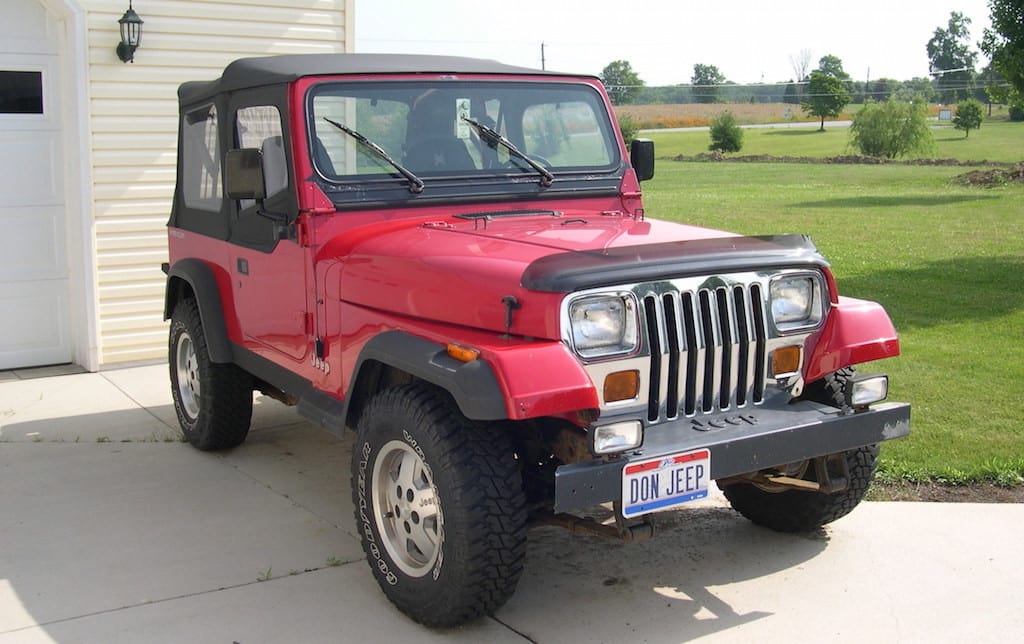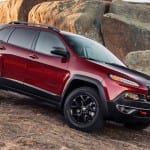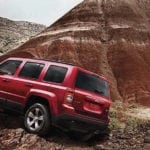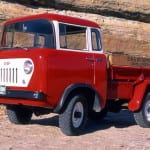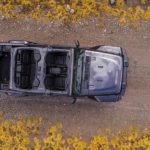If you’re a Jeep enthusiast, we suspect that you (think you) know everything about the brand. Sure, you know about the company’s history, some of the lesser-known capabilities of the vehicle, and the impressive off-roading features. However, did you know that Jeep once produced a sports car prototype? Did you know about the Jeep YJ “controversy?”
If not, check out some of the lesser-known facts regarding the Jeep brand. When you’re done, maybe you’ll be inclined to go shopping for some used Jeeps for sale at your local dealership…
Jeep YJ “Controversy”
You rarely see the release of a car generate the controversy that the Jeep YJ did when it was released in 1986. When you do, it often pertains to the vehicle’s inability to perform simple tasks, or the less-than-stellar safety features. However, when it came to Jeep’s new vehicle, the reasons for outrage were… different.
First off, the YJ replaced the beloved Jeep CJ, and while the CJ’s sales had continually declined over the years, it was still a popular and much-respected model. Jeep’s revamped vehicle was intended to appeal to daily drivers, but the company also hoped to retain many of the off-roading capabilities. Among the other changes included a wider lead spring suspension, the inclusion of trackbars and swaybars (which helped improve the vehicle’s handling) and a new grill.
A distinct change was the addition of a large windshield, and the wiper blades that rest on the glass. However, the most controversial decision was the inclusion of rectangular headlights. Jeep eventually gave in to the public outcry, and they switched back to rounded headlights following the release of the Jeep TJ.
The Rubicon’s Name
Jeep unveiled their newest addition to the Wrangler series, the Rubicon, in 2003. Featuring front and rear Dana 44 axles, the Rock-Trac four-wheel drive system, diamond plate panels, and 16-inch alloy wheels (which were paired with Goodyear MTR P245/75-R16 tires), the vehicle truly had impressive looks and impressive performance.
There was one issue, however. Jeep had their prototype, but they didn’t have a name. Ultimately, they landed on the Rubicon, attributing the name to the Rubicon Trail in Sierra Nevada. The spot isn’t only a popular area for off-roading, as it’s also used by the company to test their new vehicles. There are even Jeep-only and 4×4 events held on the grounds.
Jeeps in World War II
There’s no denying how important Jeeps were during World War II. Willys and Ford (the two producers of the vehicle) were pumping out Jeeps at a rate of one per 90 seconds, and there were an estimated 700,000 of the early SUVs built for the war. The vehicle was so prevalent, some German soldiers believed each American GI was given his own personnel Jeep.
Jeep4Ever.ca also had a number of funny and amusing anecdotes from the war. When three soldiers approached a French guard post, they claimed they were American and they were lost. The French guard knew the trio was lying, claiming they’d be riding in Jeeps if they were American. A similar story happened in Belgium. Three German soldiers were ordered to surrender after they were spotted driving around in a Jeep, with their colonel sitting in the back. The Belgian guard knew the group wasn’t American, since the colonel would surely be driving and the infantrymen would be in the back.
The website even passed along a poem written by Pvt. Jesse Wolf:
When the war was at its hottest
And the going got too steep.
One pal that I could count on
Was the mighty little Jeep
Through beachhead hell, through fire,
Our metal mounts would leap
With strictly GI courage;
I won’t forget the Jeep.
And now the war is over.
The one thing I will keep
For farm and feild and hunting –
That’s my buddy, Willy Jeep.
The Jeep was so beloved that one battered vehicle received a Purple Heart after having survived a pair of beach landings.
Beloved by Generals and Presidents
Your every day Joe wasn’t the only person to sing the praises of Jeeps. The vehicle earned plenty of praise, especially during the second World War. Take some of these quotes, for example:
“The Jeep, the Dakota airplane, and the landing craft were the three tools that won the war,” said General (and future president) Dwight Eisenhower.
Jeep was “America’s greatest contribution to modern warfare,” said General George C. Marshall.
“Versatile, reliable, and virtually indestructible, this magic motor vehicle bounced to glory as one of World War II’s most enduring legends,” was how Lieutenant Colonel Manuel Conley referred to the Jeep.
Even those in non-military roles were impressed at the Jeep’s capabilities.
“Good Lord, I don’t think we could continue the war without the jeep,” said Army official correspondent Ernie Pyle. “It does everything. It goes everywhere. It’s as faithful as a dog, strong as a mule, and as agile as a goat. It constantly carries twice what it was designed for, and keeps on going. It doesn’t even ride so badly after you get used to it.”
Even presidents haven’t been able to hide their affection for the brand. The Jeep CJ8 was one of Ronald Reagan’s favorite rides, as he always drove the vehicle around his California ranch.
Jeep Sports Car
Jeep was once referred to as a sports car, but it may have been said in jest. Enzo Ferrari, the founder of the company the bears his name, once said Jeep was the only American sports car. An optimist may believe it was the legendary racing driver’s attempt to commend the rugged brand. However, many others believe Ferrari was trying to take a dig at the Chevy Corvette, which was of course produced in America.
Believe it or not, Jeep did try their hand at producing some Jeep-sports car hybrids. The Jeep Bolide (which means a “large meteor that explodes in the atmosphere”) made it’s debut at the 1970 New York International Auto Show. The brain child of engine Jim Anger, the vehicle used an 81-inch Jeep CJ-5 chassis, added a fiberglass body, and added some sports car styling (which, as Wes Kibble of OffRoadAction.com explains, included “scooped door openings, very short approach angles, a thick windshield frame that worked as a roll bar and spoiler at the rear.”)
The concept car featured a 360ci V8 engine and the innovative Quadritrac transfer case, which eventually evolved into the Quadratrac system. The vehicle also featured H60-15 Goodyear Polyglas GT tires. Take a look inside and you’ll find fiberglass molded seats and luxurious Stewart Warner gauges.
The vehicle was a hit, but AMC’s purchase of Kaiser in 1970 led to the sports car being put on the backburner. The concept Jeep was showed around the country until it met it’s demise in an auto accident in Texas. There are rumors that the vehicle is currently undergoing restoration, but we’d be shocked if the project ever saw the light of day.
Hopefully you’ve learned a bit more about your favorite brand, and maybe we’ve even convinced you to go out shopping for a vehicle! If you’re seeking a Jeep, whether new or used, there’s no better place to start your search than at The Faricy Boys in Colorado Springs, Colorado.
